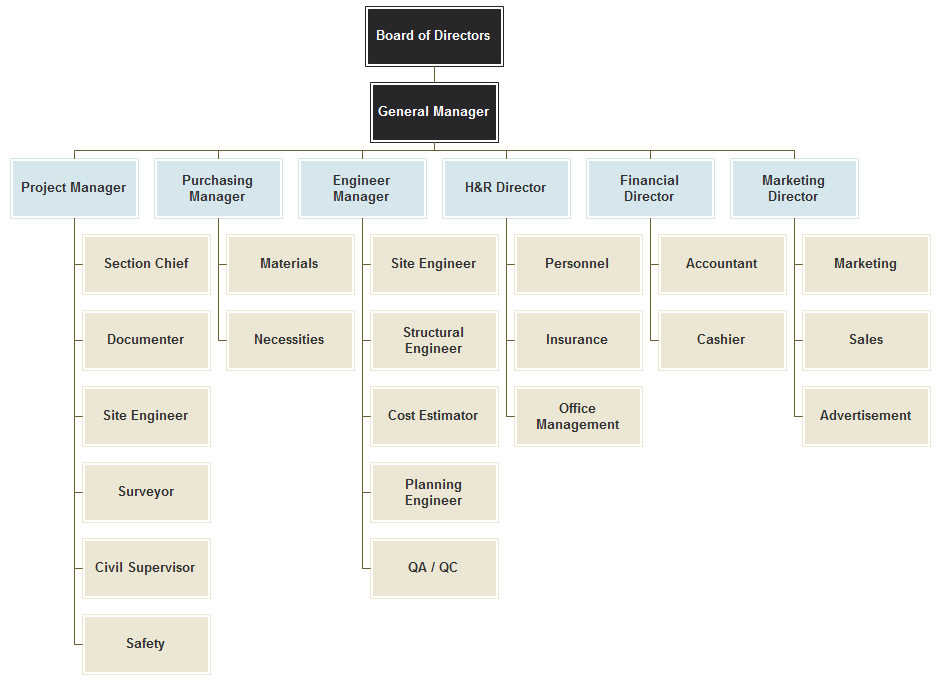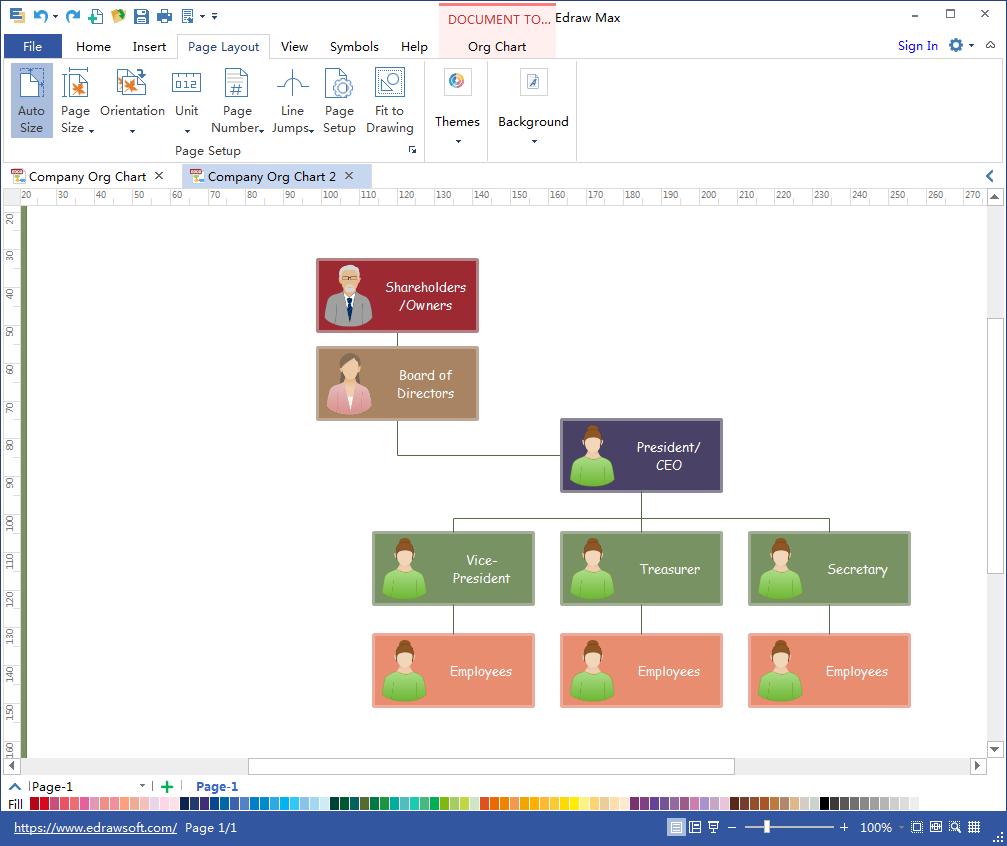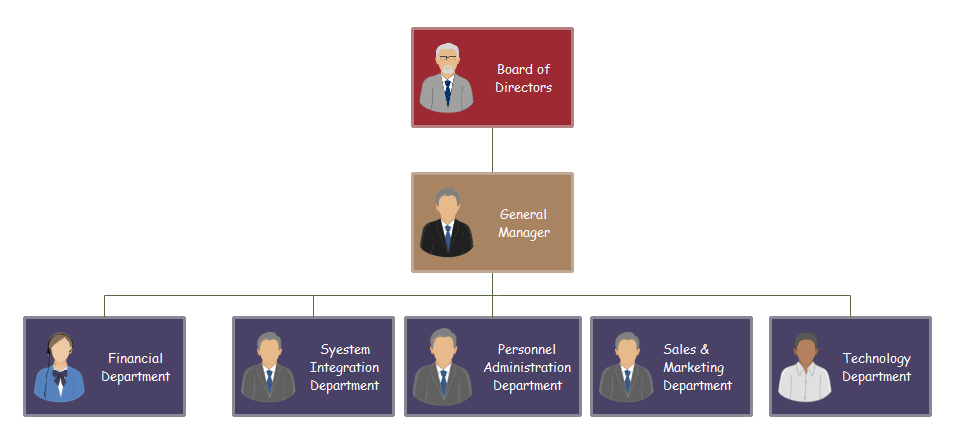The corporation can have various types of the organizational chart but in general, it is comprised of four elements: board of directors, officers, employees, and shareholders or owners. There is no imposed restriction on the position and a worker can be an employee as well as the role of the officer, board of director, shareholder or owner simultaneously. Even so, the role and function of each are quite different.
- More Easy Org Chart Creatorfor Professionally Managing Your Business Teams
Hierarchical organizational structure puts the authority and responsibility on the top side of the company and makes them flow down from the top to the lowest level gradually. This model works like a pyramid and centralizes all power and duties on people who stand on the peak of the organizational structure. To assess this type of management style, it has advantages as well as disadvantages.
With regards to company organogram optimization, we usually alter the procedure of organizational construction so as to reach the scientific systemic management model. This can be achieved base on three principles.
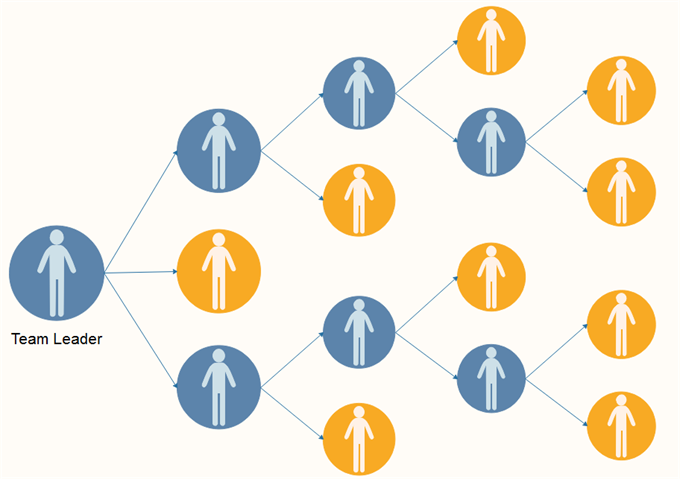
In general, most of the startups have adopted a flat organizational structure in the early years which turns out to be a good result. They expand three to four times faster than their competitors with complex layers of management. But when the young company grows to the matured organization, the org chart still keeps the same. The owner of the company fails to update the org chart because he mistakenly considers the management system as an inhibitor of creativity and flexibility. This wrong decision finally pulls the rapid growth to a stop and ends the prosperity of the entire company. So what’s the right org chart startup should adopt to keep the success sustainable? It will be illustrated based on two stages that a company stays. In each stage, the company needs different org chart.
As for a small company, the organizational structure chart must be concise and complete so that the whole company can move forward, with the least expense, normally and smoothly.
The responsibility of every fragment is as the following:
The organizational chart is a kind of diagram used to show the layout of personnel in a company, which tells us all the links between anyone in the organization. With this awesome chart, you can check for useful information as quickly as possible. It’s convenient for stuff to cooperate with each other. There are 5 key elements you have to keep in mind when drawing an organizational chart.
Work Specialization
Work specialization means the specific degree the employee has acquired. This element is often used to measure how task in an organization has been assigned to each person for most of the time the entire job cannot be done by one individual. Work specialization plays an important role in the direction of assignment distribution. That’s why specialization is called one of the most significant elements in organizational chart structure design.
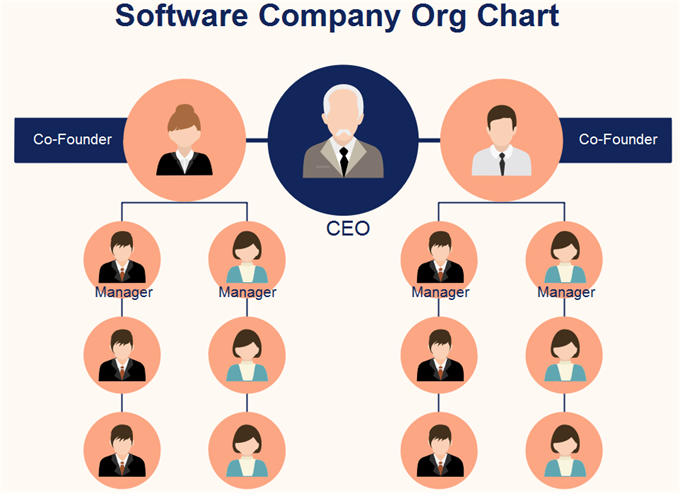
Org charts can benefit business a lot; therefore they become very popular with enterprises. Here are the top reasons why people use org chart.
In the functional structure, such as shown in the following Facebook organizational chart, functions are separated into different groups, resulting in some defects. Here are the major disadvantages you must consider:

Functional organization structure is optimal for small businesses or companies producing standardized goods or services.
Functional Organization Structure Main Advantages:
- Offers a high level of specialization.
- Employees are possible to become experts.
- Staff working skills can be effectively improved.
- could enhance the work efficiency and productivity due to the specialized skills and technology.
- Employees are highly motivated as they see clearly their career path within the functional units.
- Functional specialization can minimize the cost of operation.
- Leads to high-quality technical problem-solving.
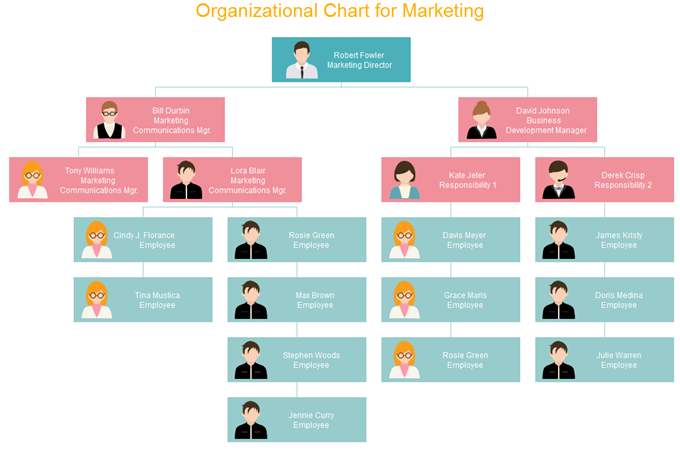
When referring to the functional organizational structure, employees are grouped based on their roles and functions, resulting in functional units such as marketing, HR, finance, etc. Generally, the heads of these specialized units will report to the top management of the company. According to the company’s size, the functional units might be further divided into smaller units. The sub-division type of organizational structure seems to be the most common organizational structures that many companies have applied.
